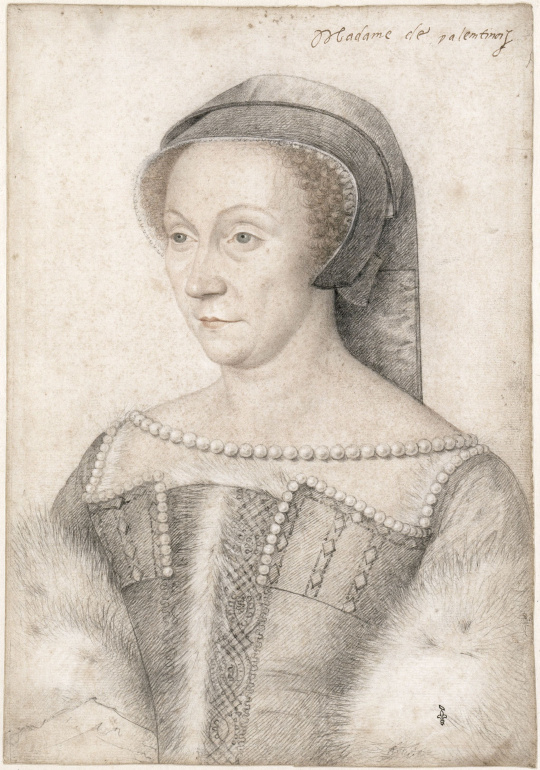Diane de Poitiers
To start, let us assess the merits of the figure’s identification as Diane de Poitiers (1500–66). Diane loomed large in both the politics and culture of 16th-century France. Born to a noble family, Diane was in the orbit of the French monarchy from an early age. Her position as King Henri II’s maîtresse-en-titre (official mistress) and trusted advisor gave her considerable status at court. She exerted influence over military and economic decisions and materialized her power through architectural commissions and the widespread dissemination of her image.
Diane was often portrayed in the guise of her namesake Diana, the Roman goddess of the moon and hunt. Allegorical depictions of her, such as this painting from the Louvre (fig. 1), have inspired historians of French art to associate an array of 16th-century representations of women with the historical Diane de Poitiers. However, many of these works are bereft of Diane’s identifying symbols, such as the stag, crescent moon and hunting paraphernalia, and bear little resemblance to portraits of Diane thought to have been drawn from life (fig. 2). The overzealous association of such images with Diane de Poitiers brings the subject of the Norton Simon’s School of Fontainebleau painting under scrutiny.
With this context in mind, let’s look more closely at the painting itself.
Figure 1: School of Fontainebleau, Diana the Huntress, c. 1540–1560, oil on canvas, 75.2 x 52 in. (191 x 132 cm), Musée du Louvre, Paris © 2017 RMN-Grand Palais (Musée du Louvre) / Adrien Didierjean
